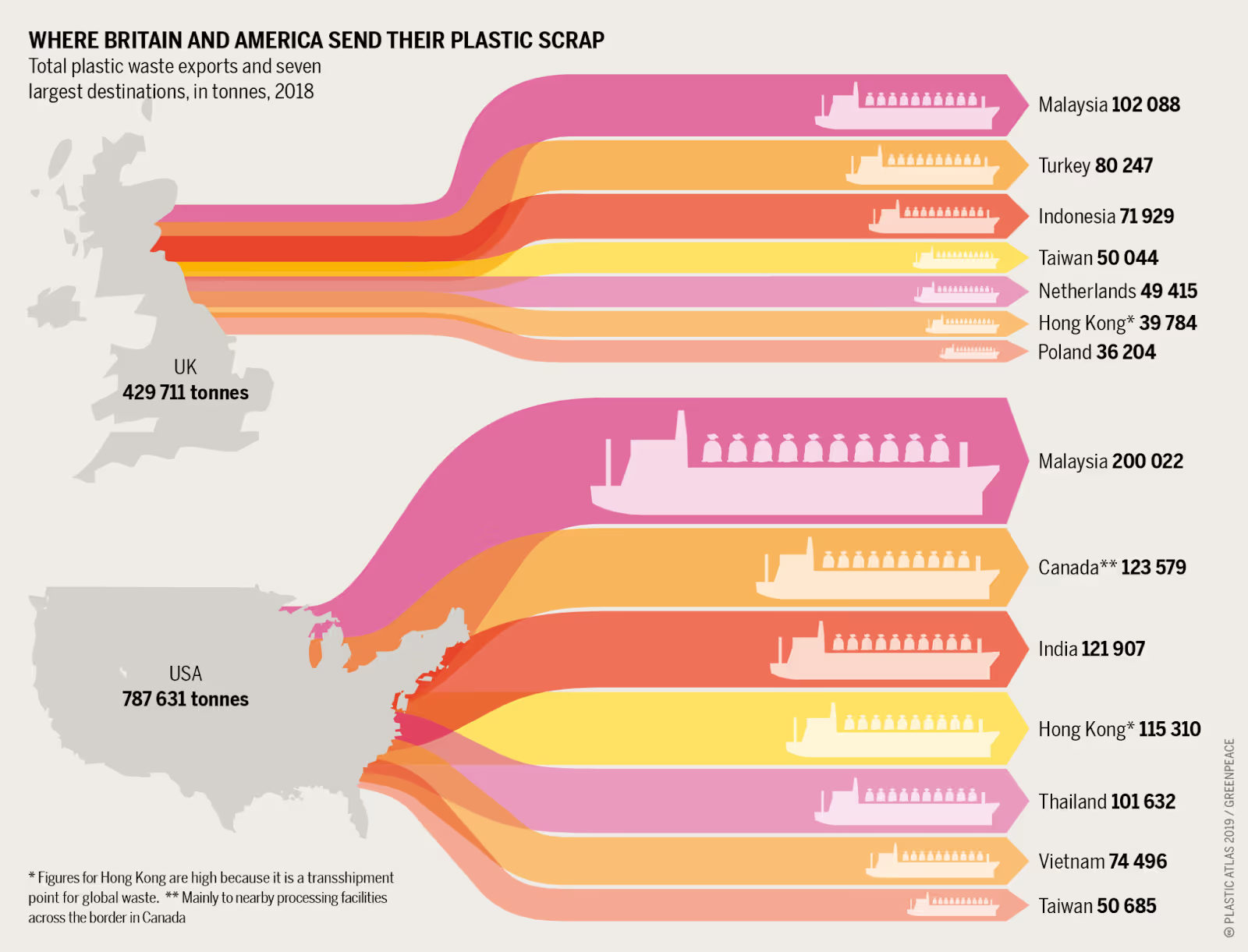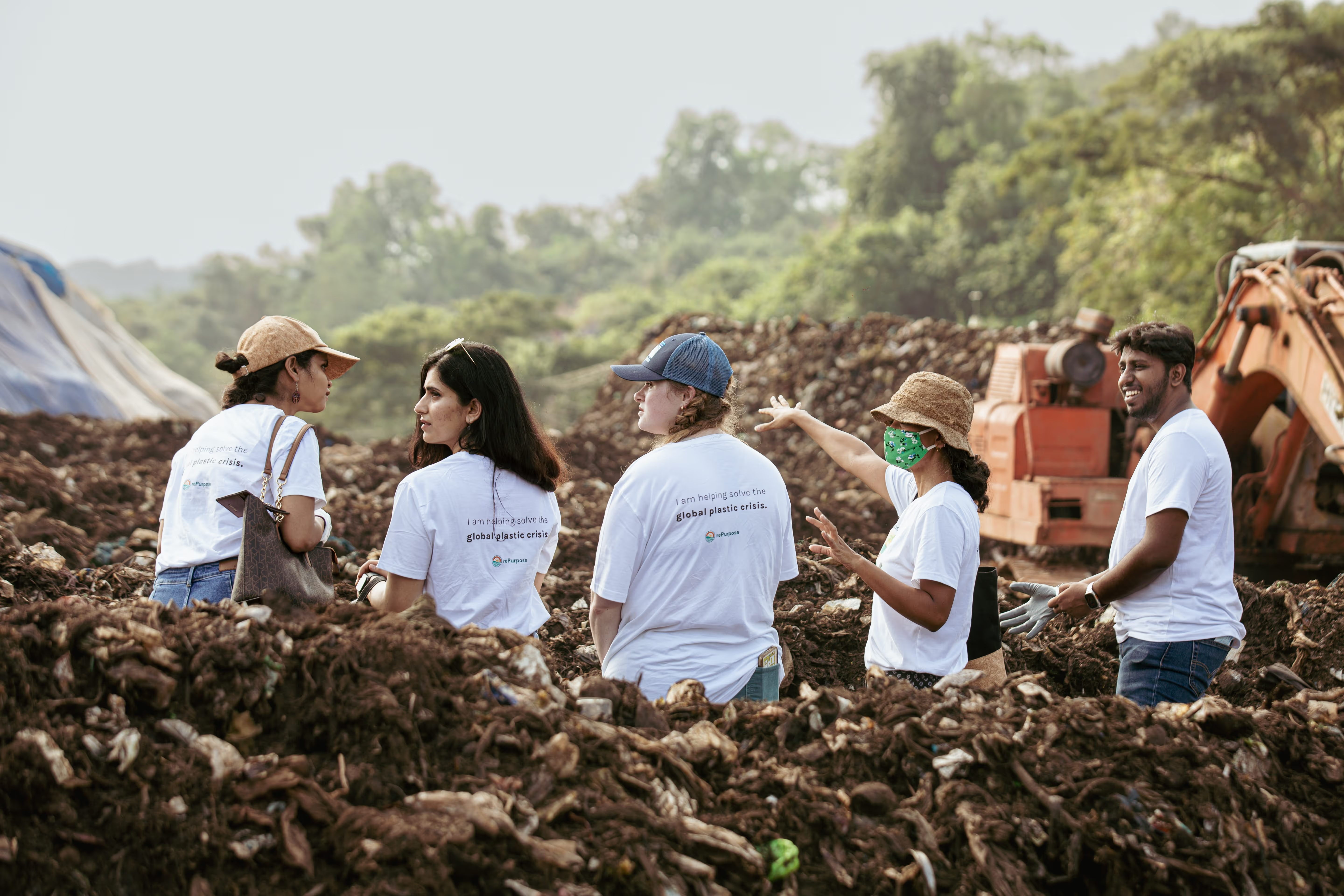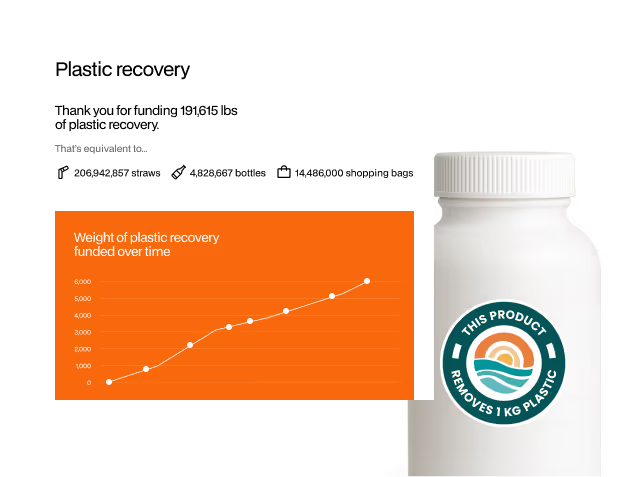It’s often reported that just 10 rivers, most of which run through populous areas of Asia, carry huge quantities of mismanaged plastic into the oceans and are responsible for 90% of ocean pollution.
The true number is probably nearer 1000 rivers (this is still only 1% of all rivers globally). But the fact remains that there are ocean pollution leakage hotspots concentrated on the populated coasts of Asia, and to a lesser extent South America and Africa.
But while plastic pollution might be more visible in these areas, it is not an issue limited to parts of the Global South. The United States, for example, produces more plastic waste than any other country. Plastic footprints (amount of plastic waste per person) in the United States are, on average, five times larger than in India or China, and three times higher than in Indonesia. Recycling plastic generally costs more than getting rid of plastic waste in 'alternative ways'. This results in a very small proportion of plastic in the United States being recycled domestically (~2-3% of total plastic), while a far larger proportion is incinerated. The US also exports a portion of its collected plastic waste.
Like the US, the UK has one of the highest per capita plastic footprints in the world, and lacks sufficient infrastructure or financial incentive to deal with the amount of plastic used. Where discarded plastic is collected for recycling around half is incinerated. A further 20% is sent abroad for recycling, and just 12% is actually recycled in the UK.

The US and UK are by no means alone in failing to deal with their domestic plastic waste, but the fact that two of the wealthiest countries in the world are exporting plastic waste is a concern. This concern is compounded by the shipment of plastic waste to countries such as India, Indonesia, Ghana and Vietnam.
Of course, it is ethically dubious to be exporting waste to countries that are facing significant waste management challenges of their own. There have also been suggestions that cheap imported plastic waste is making the situation worse by disincentivizing countries from investing in collection systems for their own plastic waste, and Thailand has recently announced a ban on plastic waste imports, from 2025.
But it gets worse. Though waste is – theoretically – shipped in order to be recycled, it has been estimated that up to 70% of plastic entering recycling facilities around the globe is discarded because it is unusable. The majority of this will inevitably end up as waste that pollutes the environment there (though Indonesia has apparently sent some rejected single-use plastic on ships back to the US). It is now well documented that exports are not all recycled and often end up causing environmental harm.
Considering the significant amounts of exported plastic from the US are leaking into the environment, along with the illegal littering and dumping on US soil, the country may be one of the biggest global contributors to plastic waste leaking into the environment (up to 1.4 million metric tons per year ending up as plastic pollution in nature).
It is not just the US, but many countries in the Global North that bear a significant moral responsibility to address the plastic pollution crisis – a responsibility that is more considerable taking into account the historical roles in perpetuating the problem.
Solutions to plastic waste crisis
One key cause for plastic pollution crisis is the ongoing and rising amount of plastic production to make new things. Another is the fact that collection and recovery infrastructure is unable to deal with the levels being produced. The gap is widening: in the past 10 years, plastic production has increased 20 times more rapidly than the collection and recycling capacity.
These fundamentals are reflected in the fact that multiple solutions are required: there is no one silver bullet solution to the plastic crisis. On the one hand, it is essential that we work to ‘turn off the tap’. We need to stop producing and using as much plastic. Whether that’s through reducing or eliminating unnecessary plastics, substituting plastic packaging to alternative materials, or adopting more effective reuse systems. This area needs huge investment.
Embracing the “circular” or “circular economy” principles is another lens through which to address the plastic crisis. Circular systems involve minimal inputs and minimal waste – instead resources are reused and recycled. Circular design involves creating products and packaging with end-of-life considerations in mind, so that materials can be reused, recycled, or composted at the end of their life cycle. In the case of plastic, more circular systems would see the decline in demand for ‘virgin’ (new) plastics in favor of post-consumer recycled (PCR) plastics.
Simultaneously, investment in recycling and recovery infrastructure is essential to ensure that existing plastic waste is prevented from leaking into the natural environment. Even with far-reaching bans and reductions in plastic use, plastic pollution will not disappear quickly. In fact, it’s estimated that even if all current plastic waste targets and commitments are met, plastic waste leaking into oceans will still more than double between now and 2040.
Building and enhancing waste management infrastructure, including simple collection and sorting systems as well as recycling capacity, can make a huge difference in ensuring that plastic waste is managed responsibly and efficiently.
Ultimately, addressing the plastic crisis requires a coordinated and collaborative effort from all sectors of society, including governments, businesses, and individuals. By working together to implement reduction strategies, invest in recycling infrastructure, and promote circular economy principles, we can create a more sustainable future where plastic waste is minimized, and the planet is preserved for future generations.
And - postponing decisive actions will just make the financial burden of addressing the plastic crisis worse (a concept known as the 'time value of plastic action'). For example, a delay of five years in taking action could result in an additional 80 million tons of plastic leakage by 2040, making the cost to tackle the additional waste even greater. In the following section we will look in more detail at the importance of reduction and the role of international agreements in creating momentum behind this shift.
Reduction and Policy
Reduction strategies focus on minimizing the use of plastics and promoting alternatives that are more sustainable. This shift can be supported by the creation and implementation of policies and regulations that ban or restrict the production and sale of certain plastics and plastic items.
The ‘purest’ form of plastic reduction is to eliminate its use. This means, for example, redesigning products to eliminate plastic components, and reducing overpackaging. In these cases innovations to the design mean that the product or packaging functions without plastic and no alternative material is required to fill the gap.
Substitution is another form of plastic reduction. Materials like paper, coated paper, and industrially compostable or home-compostable materials can replace plastics but are more easily recyclable or compostable after use.
Designing products and packaging for consumer reuse - such as shifting from a single-use plastic bag to a multi-use bag, or offering products and services that allow for packaging to be refilled, is another way to reduce plastic use.
Before proceeding, let's acknowledge that finding alternatives to plastics is often more complex than it sounds. Currently, there isn't a single miraculous material available that can fully replace the multifunctionality of plastics, especially at a cost that makes substitution decisions straightforward for most consumer packaged goods (CPG) brands. We often say, there is no 'silver bullet' packaging option - otherwise we are confident we’d all be using it. Additionally, while Life Cycle Assessments (LCAs) serve as valuable tools, they sometimes reveal that using lightweight plastic packaging, as opposed to non-plastic alternatives, results in lower greenhouse gas emissions—unless the alternative material is recycled multiple times. This consideration is crucial for organizations committed to decarbonizing their supply chains and achieving 'net zero' carbon goals.
Similarly, compostable plastics typically require specific conditions required in industrial composting facilities to break down efficiently. These facilities are far less accessible at the moment and the specific composting conditions necessitate higher temperatures, adequate moisture, and proper aeration. In a landfill, where these conditions are generally not present, industrial compostable plastics may not compost effectively and can persist for a long time without breaking down. Instead, they often behave similarly to traditional plastics, contributing to landfill waste.
As you’ve seen, the situation is intricate, and there often aren’t immediate economic motivations for brands to implement changes, leading to a worsening plastic waste crisis. Governments are being called to act. Introducing Extended Producer Responsibility (EPR) policies (where producer’s responsibility for a product is extended to the post-consumer stage of the product’s life cycle) or banning certain plastics or plastic products are options. While this is now happening, with both EPR and plastic bans rippling around the globe, some governments can be reluctant to make changes that will present short-term challenges or increased costs for businesses. Cooperation and international agreements are therefore an important part of driving change at a global scale. The UNEP has convened a Global Plastic Pollution Treaty, to be signed in 2025 that hopes to accelerate this, and set targets and guidelines for reducing plastic pollution and promoting sustainable waste management practices.
Plastic Waste Recovery
As a first step, plastic recovery requires plastic waste to be collected. This is a huge challenge. At least 2 billion people worldwide don’t have access to waste collection services. Without collection services, people have limited options to dispose of waste. Typically waste is openly burned, dumped in waterways or other unused patches of land, and plastics and toxins end up accumulating in the natural environment.
Plastic recovery also means that waste is effectively sorted. There are hundreds of different plastics, used in innumerable combinations. Segregated waste, and taking collected waste to a sorting facility, means that plastic can be sorted effectively into categories. This increases its chances of being aggregated and recycled, or having some material value recovered.
Along with this, there needs to be the infrastructure to recycle or recover plastics. With many governments and local authorities juggling priorities, the unglamorous spend on waste management infrastructure is often neglected. Even in the world’s wealthiest countries, very little plastic - even when collected - is actually recycled. In the USA it’s estimated that just 5% of plastic is recycled and turned into new things. Though this is ‘managed’ waste, with little is directly leaking into the environment, the vast majority of plastic is incinerated, left to sit in sanitary landfills, or exported to other countries for recycling.
Investment in plastic recovery infrastructure and systems - around the globe - is therefore at the heart of the solutions to the plastic crisis.
The investment represents not only a crucial component of the global solution to the plastic crisis but also presents significant economic opportunities. With regulatory pressures, consumer demand for sustainability, and more companies prioritizing environmental responsibility there is a substantial demand for post-consumer recycled (PCR) plastic. In fact prices for some PCR plastics have risen as demand continues to outstrip supply.
Failure to invest in recovery infrastructure and systems for plastic waste will see the accumulation of plastic waste in nature more than double in the next 20 years. This is an urgent need. With no sign of plastic production or waste slowing down, and current infrastructure already lacking, both reduction and recovery measures are needed to prevent the acceleration of an environmental catastrophe.
rePurpose Global: Leading the Charge Against Plastic Waste
rePurpose Global is the world’s leading Circularity Platform. The organization works with CPG brands, consumers, innovators, and policymakers to collectively combat the plastic waste crisis.
rePurpose Global’s impact projects have recovered over 70 pounds of plastic waste from the environment to date (as of Oct 2024). These projects play a role in protecting vulnerable coastal regions across the Americas, Africa, and Asia. In doing so, rePurpose Global also brings improved waste management services and systems to over 1 million people, while positively impacting the lives of thousands of marginalized waste workers.
The organization has also supported more than 300 companies measure, reduce, and take action on their plastic footprints. This is done through pioneering solutions across the circular economy value chain that can be categorized into ‘Analysis’ and ‘Action’ solutions.
Analysis solutions help businesses to assess their impact, track their progress, ensure compliance, and communicate successes. These include the AI-driven technology solution Bluebird Climate by rePurpose Global, for brands in the beauty and personal care industry. Bluebird instantly measures and analyzes both packaging’s contribution to the plastic waste problem and climate impact. Another analysis solution is rePurpose Global’s industry-leading plastic usage measurement tools, which help businesses to assess their plastic use, develop effective reduction strategies, and track and report on progress.
rePurpose Global’s solutions also take direct action on plastic waste. Brands can support rePurpose’s plastic waste recovery projects to take immediate, effective, and verifiable action on plastic waste, and generate real-time impact data.
rePurpose Global’s holistic approach to building more circular systems means that the work extends beyond providing business solutions. The establishment of the Innovation Alliance for a Global Plastics Treaty (IAGPT) in 2023, co-convened with The Ocean Cleanup, was a landmark. Stemming from the realization that solutionists and innovators were poorly represented, IAGPT fights for more inclusive and effective plastic waste policies that acknowledge the expertise and successes of local innovators and solution providers.
rePurpose Global’s collaboration with Earth Action on 'Outcomes-Based Finance' (OBF) for waste prevention is another area where we are advocating for change - this time to attract investment to stem plastic pollution. OBF aligns financial incentives with measurable environmental outcomes - rather than traditional financial returns - and could revolutionize investment in waste management infrastructure.
That’s not all. We are constantly innovating to move the needle on plastic waste and circularity. This includes developing specialist technology for plastic recovery (reTraceTM), developing the World Plastic Action Council card game to build engagement and understanding in the solutions to the plastic crisis, and creating the unique experience of the Plastic Reality Project for business and sustainability leaders.
Conclusion
It is clear that urgent action is needed to address this global challenge. At the core of the issue lies the urgent necessity to accomplish three key objectives:
- Reduce plastic consumption
- Invest in recycling and recovery infrastructure
- Promote circular economy principles
By implementing reduction strategies, supporting bold international agreements, and investing in recovery infrastructure and systems, we can create a more sustainable future where plastic waste is minimized, and the planet is preserved for future generations.
The time to act is now, and together, we can turn the tide on plastic pollution and build a more sustainable world for all.


.avif)
.avif)

.avif)






